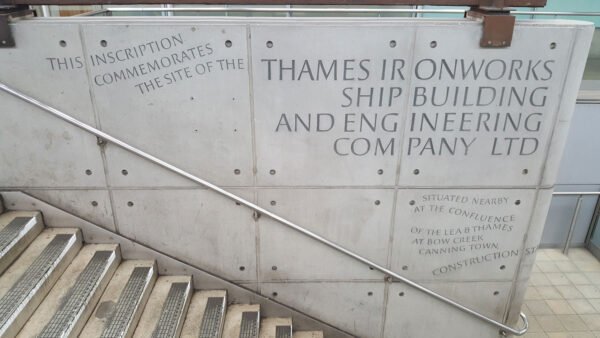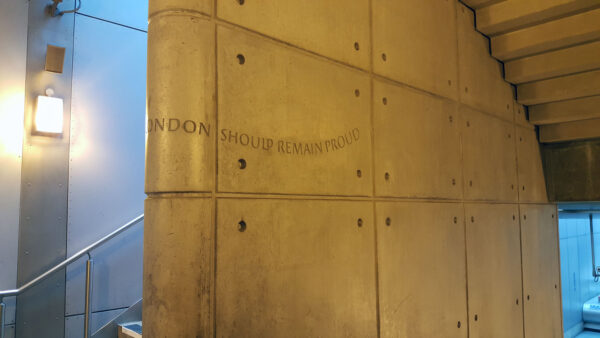There’s a tube station with a relatively little used staircase, and at the top, standing proud is a massive slab of rusted iron — from a warship.
This is Canning Town tube station, and the slab of iron comes from HMS Warrior, the world’s first armour-plated, iron-hulled warship.
It’s here at Canning Town tube station for a very special reason, as this was heart of London’s ship building works in Victorian times, and in June 1859, the Admiralty awarded the contract to build the warship to the Thames Ironworks and Shipbuilding Company based in Blackwall.
They had to reinforce the slipway she was built on to cope with the additional weight, and the manufacturers nearly went bust building her. Even the launch was ill-fated, as the winter was exceptionally cold and the iron hulled ship froze to the slipway, requiring rams and extra tugs to pull her free and into the Thames.
As part of the Jubilee line extension, Canning Town station was upgraded, and this new staircase added, with a concrete wall that’s had the history of the area inscribed into it.
The monument was made by created by sculptor Richard Kindersley, who hand carved all the lettering after the concrete slab had been installed. The concrete panels have also been given the appearance of having been bolted together with rivets to give the impression of a ship’s hull.
It was unveiled in 1999 by local boy made good, George Carey, at the time, the Archbishop of Canterbury.
The text, which flows around the wall in waves recalls the various triumphs of the local ship builders, from HMS Warrior to the Dreadnaught ships, and even some railway bridges in London.
It also lead to the formation of a famous football club, West Ham, which uses the crossed hammers as its symbol — from the hammers used by the shipbuilders.
At its peak, the shipyards at Blackwall employed over 7,000 men, but over time it became more effective to produce iron and steel outside London, and the shipbuilding moved away.
HMS Warrior itself was mothballed, but rescued in the 1960s and restored in the 1980s. Listed as part of the National Historic Fleet, HMS Warrior has been based in Portsmouth since 1987.
The inscription says that the yard went into receivership in 1912 after 65 years of endeavour & invention for which London should remain proud.











Loving most of the history that happened in London. I have been to Canning Town before and it’s got some good stuff.
HMS Warrior (1860) was not just any warship. She is described on the Portsmouth Historic Dockyard website as “The fastest, largest and most powerful warship in the world when she was launched”. My father had a hand in her restoration.
For a photograph, see http://www.hmswarrior.org/
But if HMS Warrior is preserved afloat at Portstmouth Harbour, how come the steel plate is at Canning Town. Is it off the ship, or is it a replica. And is there a hole in Warrior’s hull ?
More questions than answers !